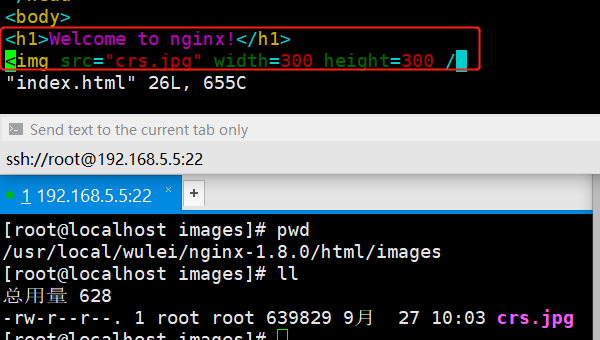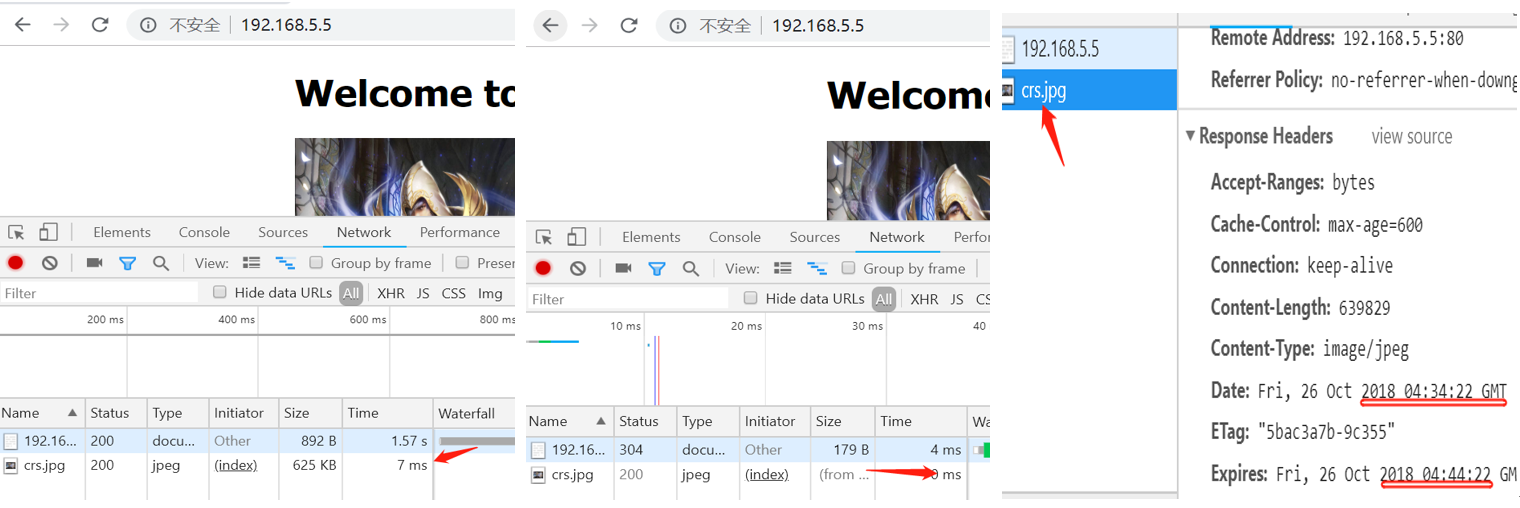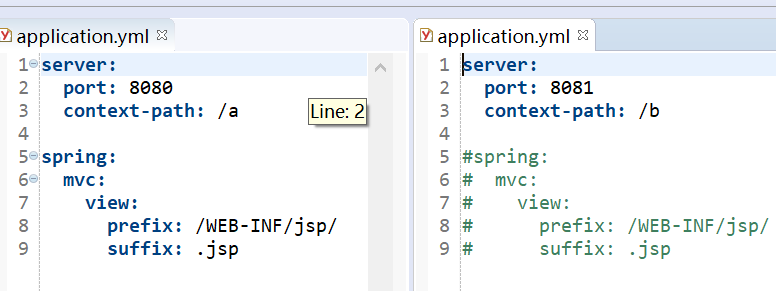当我们请求一个网页的时候,可能会加载很多css,js,img等静态文件;一般这些文件是很久都不会变化的,所以我们为了提高页面响应速度,完全可以将这些文件缓存到浏览器中(可以理解为cookie信息),这就叫动静分离。
1. vim nginx.conf
worker_processes 1; events { worker_connections 1024; } http { include mime.types; default_type application/octet-stream; log_format wuleiformat '$remote_addr - $remote_user [$time_local]'; sendfile on; keepalive_timeout 65; server { listen 80; server_name localhost; location /baby_ting{ alias '/usr/local/wulei/nginx-1.16.1/html/LOVE/'; } # 输入ip默认访问html文件夹下的index.html文件 location / { root html; index index.html index.htm; } # 所有.png .css ...结尾的文件都直接去/html/images里面找 location ~ .(png|jpg|js|css|gif)$ { root html/images; expires 10m; # 缓存10分钟 # s秒 m分 h时 d天 } } }
2. 修改首页index.html 让它去加载一个静态图片。

3. 重启可以看到效果(图片第一次加载花了7ms,后面再次刷新就是0ms,查看详细信息看到34分第一次缓存的,直到44分失效)。

nginx网关配置
1. 比如现在有两个项目,url前缀分别是 /a /b

2. nginx.conf 配置网关
#user nobody;
worker_processes 1;
events {
worker_connections 1024;
}
http {
include mime.types;
default_type application/octet-stream;
#log_format main '$remote_addr - $remote_user [$time_local] "$request" '
# '$status $body_bytes_sent "$http_referer" '
# '"$http_user_agent" "$http_x_forwarded_for"';
#access_log logs/access.log main;
sendfile on;
#tcp_nopush on;
#keepalive_timeout 0;
keepalive_timeout 65;
#gzip on;
server {
listen 80;
server_name localhost;
location /a {
proxy_pass http://127.0.0.1:8080/a/;
}
location /b {
proxy_pass http://127.0.0.1:8081/b/;
}
}
}
此时: 访问localhost/a/index 就相当于访问 127.0.0.1:8080/a/index了。